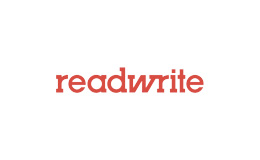
Streamline Employee Onboarding with HR Automation
Welcome to the era of HR automation, where the power of technology meets the art of employee onboarding. In today’s fast-paced business landscape, organizations recognize the need for efficient and engaging onboarding experiences.
With HR automation, companies can revolutionize their onboarding processes, saving time, reducing administrative burdens, and fostering a sense of connection from day one.
In this article, we will explore how HR automation drives the transformation of employee onboarding, empowering organizations to optimize efficiency and engagement. Prepare to embark on a journey filled with practical insights and actionable strategies to elevate your onboarding game.
The Traditional Onboarding Challenge
Imagine the piles of paperwork, countless manual tasks, and disjointed communication that often plague traditional onboarding methods. These inefficiencies can quickly drain time and resources, leaving new hires feeling overwhelmed and disconnected.
But fear not, as HR automation steps in to ease these challenges. By embracing automation, organizations can streamline their onboarding processes, empowering HR teams to focus on building relationships and creating a positive experience for new employees.
Pre-Onboarding Made Effortless
The onboarding journey starts even before a new hire’s first day. HR automation is vital in simplifying pre-onboarding processes, ensuring a smooth transition from candidate to employee.
HR automation streamlines pre-onboarding processes by eliminating the burdensome paperwork often accompanying this stage. Automated systems are utilized to collect and verify candidate information, reducing manual data entry and ensuring accuracy. This not only saves time but also minimizes the risk of errors that can arise from manual handling, enabling HR teams to engage with new hires from the get-go.
One key feature of HR automation in pre-onboarding is the implementation of self-service onboarding portals. These portals provide candidates with a user-friendly platform to conveniently submit necessary documents and access relevant information. By enabling candidates to take an active role in their onboarding process, self-service portals empower them and enhance their engagement even before their first day on the job.
Candidates can complete required forms, provide personal details, and upload essential documents securely and efficiently. This self-service approach not only improves efficiency but also provides candidates with a sense of control and involvement, contributing to a positive onboarding experience.
Moreover, automated pre-onboarding systems enable HR teams to engage with new hires from the beginning. It creates a personalized and supportive experience. Through automated communication channels, such as email or messaging platforms, HR can share important information, welcome messages, and necessary instructions with new hires.
This proactive and consistent communication helps build a connection with candidates. Fostering a sense of belonging and excitement about joining the organization.
Streamlining Onboarding Workflows
Once a new employee steps through the door, HR automation continues to work its magic by optimizing onboarding workflows. HR teams can create tailored onboarding workflows that are customized based on job roles and departments, ensuring that each employee receives the right information and tasks at the appropriate time.
Automated task assignment is a key component of streamlined workflows. HR automation systems can automatically assign specific tasks to new hires, eliminating the need for manual assignments. Doing so reduces the risk of important steps being overlooked.
Notifications and reminders can also be automated, keeping both HR teams and new employees informed throughout the onboarding journey. This proactive approach prevents crucial onboarding activities from falling through the cracks. Ensuring new hires have a clear understanding of their responsibilities and timelines.
Rather than relying on manual processes that involve printing, scanning, and physical paperwork. Automation allows for digital delivery and completion of forms through secure portals or electronic signatures. This eliminates the need for time-consuming administrative tasks and reduces the risk of errors or lost paperwork. HR professionals can leverage automation to create a seamless and efficient experience for new hires. By enabling them to focus on building connections and providing support during the onboarding process.
Personalization and Learning Paths
Gone are the days of one-size-fits-all onboarding. With HR automation, organizations can deliver personalized onboarding experiences that cater to the unique needs of each employee. Intelligent onboarding platforms leverage data to provide tailored resources and training modules. This ensures new hires receive the information they need to excel.
By automating the delivery of onboarding materials, companies can enhance engagement and empower employees to learn at their own pace. Personalized learning paths can be created based on factors such as job roles, skill levels, and previous experience.
This allows new hires to access the right training resources and modules that directly align with their specific needs and objectives. By providing employees with personalized learning opportunities, organizations demonstrate their commitment to supporting individual growth and development.
Effective Communication and Collaboration
Open and efficient communication is the core of successful onboarding. HR automation offers innovative solutions to foster effective communication and collaboration between HR teams, new hires, and existing employees.
Chatbots or virtual assistants provide instant answers to common onboarding questions, reducing response times and enhancing the employee experience. These automated systems provide instant responses to common questions. Reducing response times and ensuring that new hires receive timely and accurate information.
By having quick access to answers, new employees can feel supported and empowered from the outset, eliminating potential confusion or frustration. This efficient communication channel allows HR teams to focus on more complex inquiries and provides a personalized experience for new hires.
With the right collaboration tools, such as project management platforms or communication apps. Automation bridges geographical gaps and enables seamless collaboration during the onboarding process. This promotes teamwork, knowledge sharing, and building relationships among new hires and existing employees, regardless of their location.
Tracking Progress and Continuous Improvement
HR automation brings transparency and accountability to employee onboarding by utilizing automated tracking tools and analytics. These tools provide real-time insights into completion rates, proficiency timelines, and other key metrics, allowing organizations to identify areas for improvement.
Additionally, HR automation enables the collection of qualitative feedback from new hires and offers valuable insights into the effectiveness of the onboarding process. By leveraging automated surveys or feedback mechanisms, organizations can gather valuable insights into the experiences and perceptions of new employees.
This feedback provides a wealth of information that can be used to identify strengths, areas for improvement, and opportunities for enhancing the onboarding process.
Organizations can continuously refine and optimize their onboarding programs by analyzing quantitative metrics and qualitative feedback. This iterative approach allows for implementing best practices, adjustments to training materials, and identifying potential pain points that new employees may encounter.
Continuous improvement based on real-time data and feedback. This ensures that the onboarding experience is seamless, engaging, and aligned with the evolving needs and expectations of new hires.
Ensuring Compliance and Policy Acknowledgment
Ensuring compliance and policy acknowledgment is a critical aspect of employee onboarding. HR automation plays a pivotal role in simplifying and streamlining this process. By automating compliance training, organizations can deliver standardized and up-to-date training modules to new hires, ensuring they clearly understand regulatory requirements and company policies.
Additionally, HR automation streamlines policy documentation processes, making it easier for employees to access and review important policies and procedures. Through automated tracking and reminders, organizations can ensure that employees have acknowledged and understood these policies, promoting a culture of compliance and accountability.
By leveraging HR automation for compliance and policy acknowledgment, organizations can mitigate risks, and enhance regulatory adherence. By delivering consistent and up-to-date training, HR automation helps employees stay informed about legal and regulatory obligations. Reducing the potential for compliance-related issues. Automated tracking and reminders ensure that policy acknowledgments are timely and accurately recorded, enabling organizations to demonstrate their commitment to adherence and accountability if needed.
Enhancing Engagement through Automation
Enhancing engagement through automation is a powerful strategy for organizations looking to create a positive onboarding experience. HR automation allows for personalization, tailoring the onboarding journey to new hires’ specific needs and preferences.
By customizing the onboarding process, organizations can foster a sense of individuality and relevance, increasing new employees’ engagement and satisfaction. Additionally, incorporating gamification elements into the onboarding experience adds a fun and interactive dimension. It motivates new hires to participate and learn actively. Gamified activities, such as quizzes, challenges, or rewards, create a sense of excitement and accomplishment, driving engagement throughout the onboarding process.
Moreover, automation facilitates the creation of a sense of connection and belonging from day one. Organizations can foster a welcoming and inclusive environment by automating the introduction of new hires to team members, assigning mentors, and facilitating communication channels.
Organizations can lay the foundation for long-term engagement and retention through automation by creating a personalized, interactive, and connected onboarding experience.
Overcoming Challenges and Considerations
Overcoming challenges and considerations in HR automation is crucial to ensure successful implementation. Organizations must address concerns and resistance to automation by highlighting its benefits, addressing misconceptions, and providing training and support to employees.
Data security and privacy should also be a top priority, with robust measures in place to safeguard sensitive information. Balancing automation with personalized human interactions is also essential, as technology should enhance rather than replace human connections. Finding the right balance allows organizations to leverage automation for efficiency. While maintaining the personal touch that fosters engagement and builds relationships.
By proactively addressing these challenges and considerations, organizations can maximize the benefits of HR automation. And create a harmonious integration of technology and human interactions in their onboarding processes.
Conclusion
In conclusion, HR automation presents a transformative solution for organizations seeking to streamline employee onboarding processes while maximizing efficiency and engagement.
By embracing automation, companies can eliminate tedious administrative tasks, deliver personalized experiences, enhance communication and collaboration, and continuously improve their onboarding programs based on data-driven insights.
Now is the time to leverage the power of HR automation and unlock the full potential of your employee onboarding journey. Embrace efficiency, foster engagement, and set the stage for long-term success in the ever-evolving world of work.
Featured Image Credit: Pexels; Thank you!





